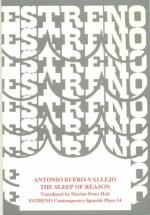|
This section contains 501 words (approx. 2 pages at 400 words per page) |

|
As multifaceted and multilayered as Buero Vallejo's play is the history of its critical reception. Unlike controversies surrounding some plays, The Sleep of Reason does not fire controversy, but research and analysis. Shortly after The Sleep of Reason first appeared in 1970, Ricardo Domenech, in "Notas sobre El sueno de la razon," points out that the epoch of civil discord under Ferdinand VII resembles the period during and immediately following the Spanish Civil War; the play is therefore both historical and contemporary. Domenech also draws parallels between Ferdinand and Goya: Ferdinand embroiders and Goya paints, and both use spyglasses to view each other across the Manzanares River running through Madrid. In the same year, Juan Emilio Aragones, in "Goya, pintor baturro y liberal," calls the work the first spectacle of "total theater" by a Spanish author. "Total" refers to the play's use of audio and visual projections...
|
This section contains 501 words (approx. 2 pages at 400 words per page) |

|




